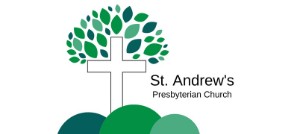What Does The Lord Need
Palm SundayThis is a long week in our faith. Palm or Passion Sunday marks the beginning of Holy Week. We begin Jesus’ dangerous journey to Jerusalem. The liturgy of the Palms and the Liturgy of the Passion occupy the same stage. Palm Sunday is a day of contrasts pivoting between happy triumph and inevitable crucifixion, all because of Jesus’
uncompromising obedience to God’s way in the world.
Today we shine the light on the two faces of Palm Sunday. On one hand this day is referred to as the Liturgy of the Palms from Matthew 21 and the Liturgy of the Passion as described in Matthew 26. I suspect that most of us are more in love with the images of palms waving along the parade route than the later story of Jesus’ agony in the Garden of Gethsemane. Both are important to help us take the lens cap off Palm Sunday and see the two distinct events that lead us emotionally and spiritually through Holy Week.
What does the Lord need in each of the two passages of scripture? A more basic question for us: What does the Lord need from us today as we begin this Holy Week journey?
The Liturgy of the Palms begins simply enough. Jesus and the disciples were just outside Jerusalem after leaving the home of Mary, Martha, and Lazarus. Jesus sent two disciples ahead to the village of Bethphage. Their instructions were clear: “Go into the village ahead of you, and immediately you will find a donkey tied, and a colt with her; untie them and bring them to me. If anyone says anything to you, just say this,
‘The Lord needs them.’” What does the Lord need? Just a colt?
Jesus’ higher purpose was to fulfill a 500 year old prophecy from Zachariah that Jesus sets in motion by securing that colt. “People of Jerusalem, shout! Your king comes to you. He always does what is right. He has won the victory. He is humble and riding on
a donkey’s colt.” (Zechariah 9:9-10 NIRV). The question of Jesus’identity reverberates through Matthew’s account.
Jesus had been talking to the disciples about his impending death but they couldn’t see it or accept his story. The crowds shout of “Hosanna,” save us, and the waving of palm branches contrast with the image of a King presented by the prophet Zecharaiah. He foretells of a humble Messiah riding on a colt in a non-violent procession into the city.
The cheering crowds would be preferred by most of us. Who doesn’t love a parade?
The crowd waved their palm branches and laid them and their cloaks in the road to line the parade route in honour and celebration.
What does the Lord need? A parade’s cheering crowd?
The crowd cries “hosanna” which means “save us” without understanding what Jesus came to do. The disciples and the crowd display no awareness that Jesus was entering
Jerusalem for the last time. Jesus wanted us to understand that he came to save us from ourselves.
Matthew 26 forms the passion narrative, Jesus experiences betrayal, physical and emotional violence, and ultimately his arrest and eventual death. After the last supper in the upper room, Jesus invited his disciples to come and sit with him while he prayed in the Garden of Gethsemane. Jesus is obviously in spiritual and emotional agony. Three times Jesus returns from his prayer to check on the disciples and each time he finds them asleep. He asks, could you not stay awake with me, could you not pray?
The first time he awakens them. The second time he left them alone. The third time he told them to get up, their betrayer was at hand.
Even without the disciples supporting him, Jesus appears to get what he needs from the time of prayer. In Mark 14, Jesus prays the same thing each time. “Abba, Father, for you all things are possible; remove this cup from me; yet, not what I want, but what you want.” (Mark 14:36).
By contrast, in the Matthew passage we read, Jesus evolves in his prayer. He begins like Mark’s version, but the second time he prays, something has shifted, “My Father, if this cannot pass unless I drink it, your will be done” (verse 42). In the first prayer, Jesus asks God to “remove this cup from me.” In the second prayer, Jesus has come to a place of grim, determined acceptance. He does not want what is to come, but Jesus is
ready to face it.
At the end of the passage, Jesus rouses his sleepy disciples, and they witness his betrayal with a kiss, the ensuing violence, and his capture. As the mob makes its way to the garden, Jesus is still trying to get the disciples to recognize what is happening, that the end of his life and ministry is near. This is a key moment. Jesus seems to be asking them to recognize that his hour has come and to keep awake. Jesus’ earlier admonition to “keep awake” means more than staving off sleep. Jesus’ friends are urged to be alert.
While this story is about the journey of Jesus, we are invited to make that journey ourselves through this long week. This long journey for him and for us is a journey into new obedience that challenges the settled world and into new truth of God’s life giving power.
What does the Lord need from us today as we begin this Holy Week journey?

